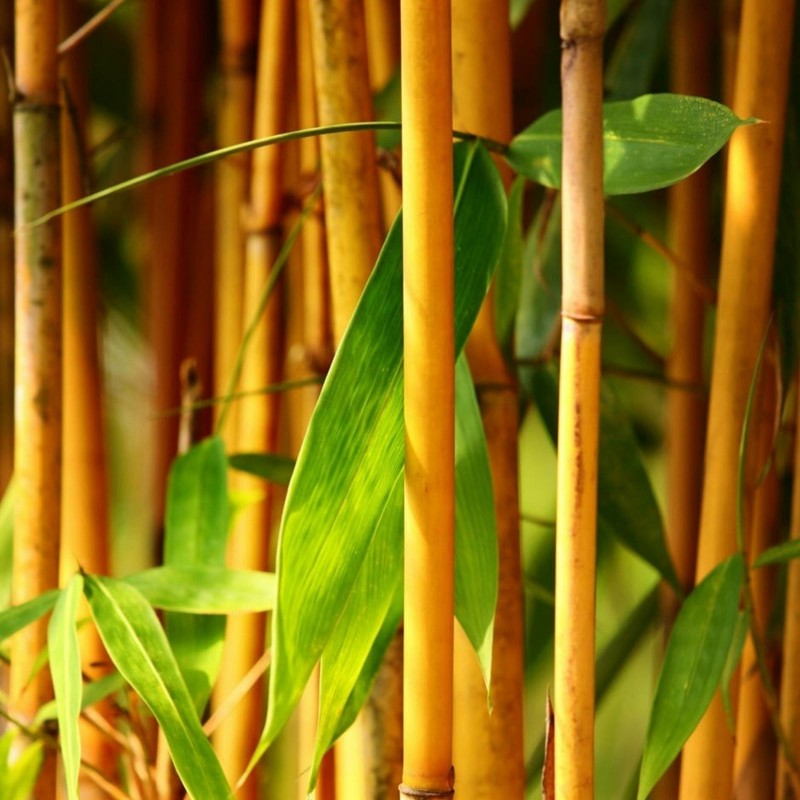













One of the most common bamboos in the United States, and for a good reason: although usually not very tall, it is one of the strongest and most useful. Growing rigidly upright, this bamboo is one of the
One of the most common bamboos in the United States, and for a good reason: although usually not very tall, it is one of the strongest and most useful. Growing rigidly upright, this bamboo is one of the best for hedges and for planting next to driveways and walkways.
It often has a series of distorted internodes at the base of the cane, sometimes called "Tortoise Shell" internodes, that are quite ornamental and make this plant useful for craft work. Culm color of the species type is green. Like other Phyllostachys, when exposed to strong direct sunlight, the canes will fade to yellow with age. Phyllostachys aurea can be an aggressive spreader in hot climates, where care must be used in its placement.
zones 7-10
WIKIPEDIA:
Phyllostachys aurea is a bamboo species of the 'running bamboo' type, belonging to the diverse Bambuseae tribe. It is native to Fujian and Zhejiang in China. It is commonly known by the names fishpole bamboo, golden bamboo, monk's belly bamboo, and fairyland bamboo (Australia).
Cultivation
P. aurea is cultivated as an ornamental plant for gardens. In the United States, it is considered an invasive species that crowds out native species and is difficult to remove. It is also the most commonly cultivated bamboo in the United States. It is a cold-hardy bamboo, performing well in USDA zones 6 to 10, (Connecticut to Florida).[2] It has gained the Royal Horticultural Society's Award of Garden Merit.
Uses
P. aurea's lush foliage makes it desirable for ornamental purposes and privacy hedges, and its characteristic 'knotty' compressed lower internodes render it desirable among collectors.[2] It is well-suited to the making of bamboo pipes.
Identification and growth habit
The common forms of P. aurea are easily identified by their characteristic compressed internodes in the lower part of the canes which have a tortoise shell-like appearance. This internodal compression result in shorter heights (25 ft) and thicker cane diameters (relative to height) than many other Phyllostachys species.
The canes turn yellow in full or partial sun, and deepen into a gold-orange color as the plant matures. Branching and foliage tend to start lower to the ground than many other Phyllostachys species, but some prefer to cut off lower branches to show off the interesting 'tortoise shell' lower part of the canes (see photo).
Adatlap